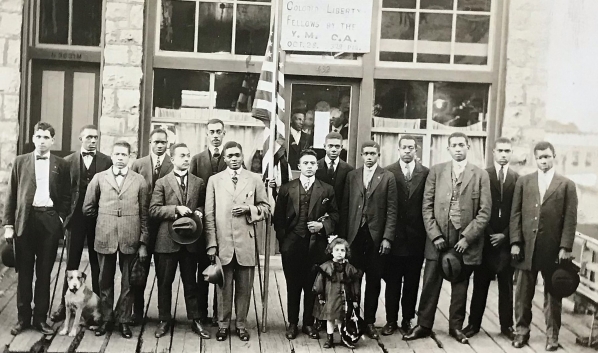In this blog post are a few of the new additions to the W.L. Eury Appalachian Collection at the Special Collections Research Center. If they pique your interest, make an appointment to take a closer look!
The Colored Department of Norfolk and Western Railroad Y.M.C.A. photograph, AC 266, depicts 15 African Americans standing in front of a building with a sign reading "Colored Department / N. [and] W. R.R. Y.M.C.A. / A Farewell to the / Colored Liberty / Fellows by the / Y.M.C.A. / Oct. 28 330 pm." This photograph was taken circa 1920s.
![15 African Americans standing in front of a building with a sign reading "Colored Department / N. [and] W. R.R. Y.M.C.A. / A Farewell to the / Colored Liberty / Fellows by the / Y.M.C.A. / Oct. 28 330 pm." This photograph was taken circa 1920s.](https://collections.library.appstate.edu/sites/default/files/ac266.jpeg)
Colored Department of Norfolk and Western Railroad Y.M.C.A. photograph, AC 266
The Edward Bobal Photograph Album, AC 245, was kept by Edward Bobal and his wife, Madelyn, in 1945, while he awaited reassignment in the Army in Asheville, North Carolina. First Lieutenant Edward Bobal served with the United States Army's Cavalry Division in the Southwest Pacific for 18 months during World War II. The album shows their 10 day stay in Asheville. Their photographs depict each other posed around the city, tourist sites, and various landmarks. They visited Grove Park and stayed at the Grove Park Inn. The couple also visited the Biltmore House, which is labelled the "George W. Vanderbilt estate" in the album. The album's cover is leather with handpainted flowers and the title "Snap Shots Asheville N.C."
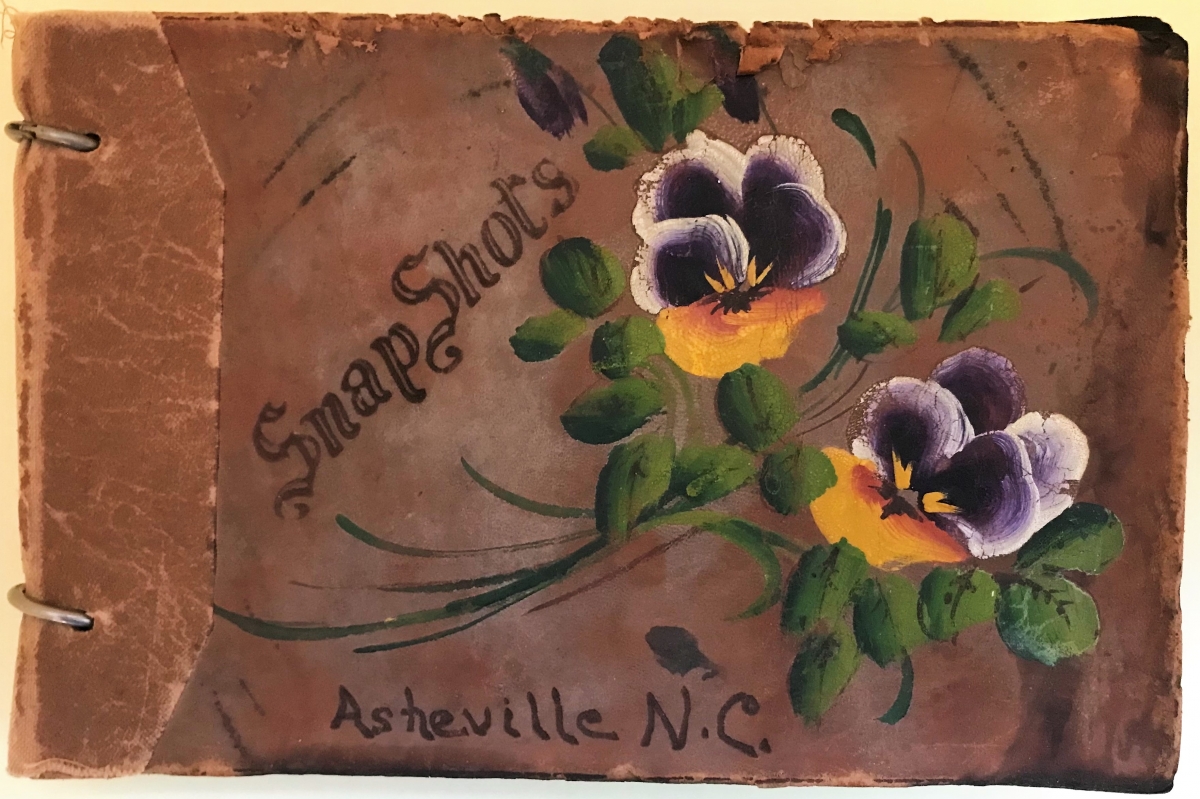
Front cover of the Edward Bobal Photograph Album. Hand painted brown leather with purple and yellow pansy flowers and leaves. It reads “Snap Shots Asheville, N.C.”
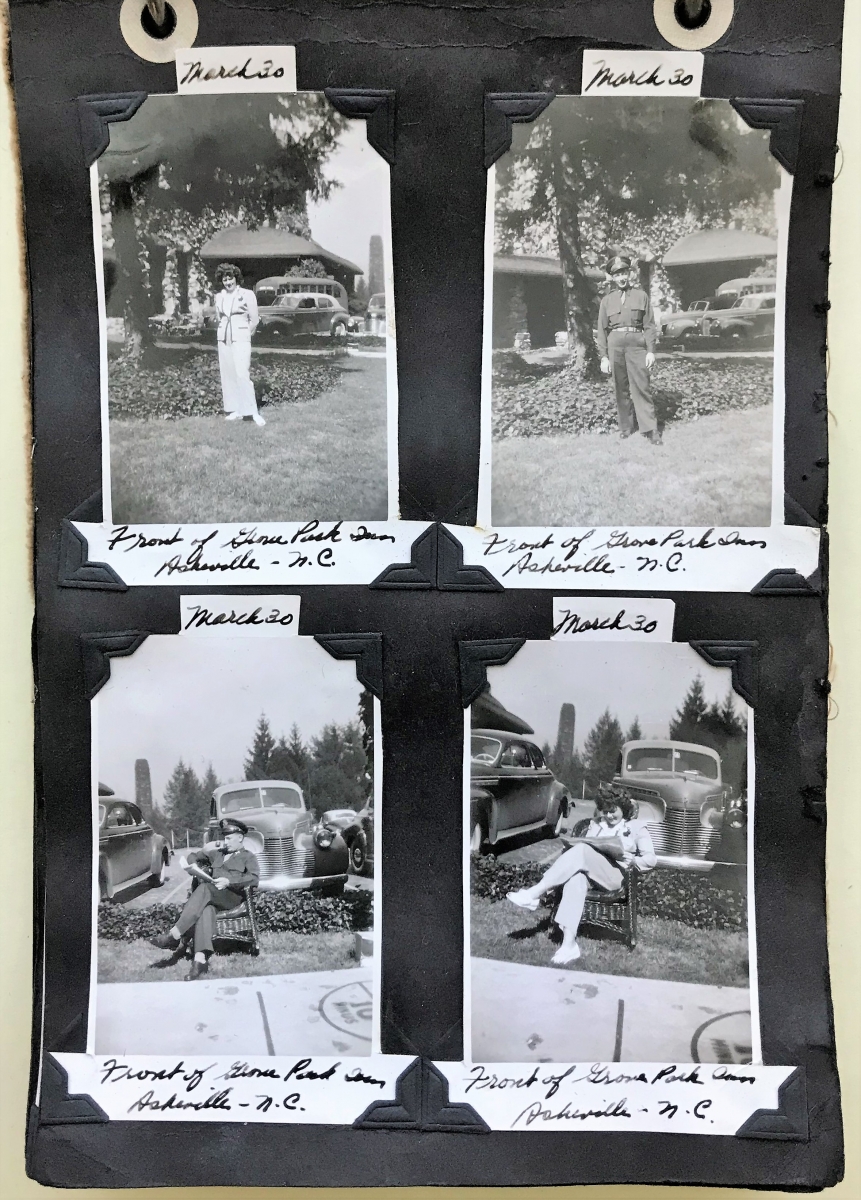
This page of the photograph album displays four black and white photographs. The photograph at the top left corner of the page features Madelyn Bobal standing and posing on the lawn at the front entrance of the Grove Park Inn in Asheville, N.C. The photograph in the top right corner shows Edward Bobal standing and posing in the same location. The bottom left photograph shows Edward lounging in a chair, reading a newspaper with his back to the parking lot. The bottom right photograph features Madelyn in the same pose. Each photograph is labelled “March 30.”
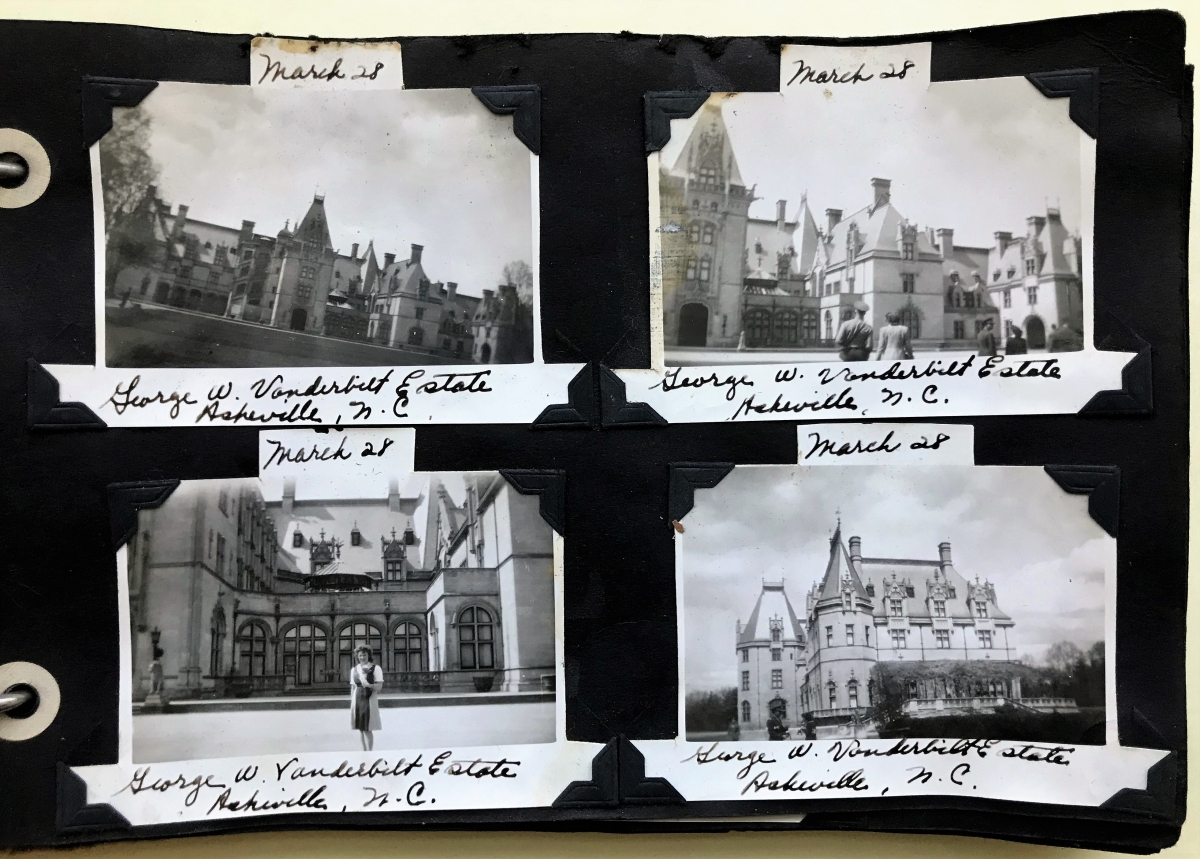
This page in the album displays four black and white photographs of the Bobals’ visit to the George W. Vanderbilt Estate in Asheville, N.C. Each photograph is labelled “March 28.” The two photographs at the top left and bottom right are of the house from a distance. The top right photograph shows the backs of Edward and Madelyn as they look up at the house. The bottom left photograph features Madelyn posing in front of the house.
The Orpheus Schantz Scrapbook, AC 262, is a handmade scrapbook containing black and white photographs, original poems, and typed narratives of a trip to the Great Smoky Mountains of Tennessee and Gatlinburg in June, 1923. The scrapbook was compiled by Orpheus M. Schantz with one poem reading "This is the tale of the jolly four / who spent the night on a balsam floor / on top of Leconte in Tennessee / above the clouds 'neath a balsam tree." All the poems are written by Schantz. The typed narratives are from Jennie A. Russ and Gertrude D. Schwass, the two women in the trip's party. The fourth member of the trip was Frank A. Freels. The four of them traveled from Chicago and were led by the famed Great Smokies guide Wiley Oakley to climb Mount Le Conte. Orpheus Schantz (1864-1951) was a naturalist, President of the Chicago Audubon Society, and director and treasurer of the Chicago Geographic Society. According to his obituary in the New York Times on September 4, 1951, he was one of the group instrumental in establishing the Great Smoky Mountain National Park in Tennessee and was chairman of the Excursions Committee which conducted tours there. Jennie A. Russ (d. 1972) worked in the stenographic division of the Continental Illinois National Bank and Trust Company of Chicago for 25 years before retiring in 1941.
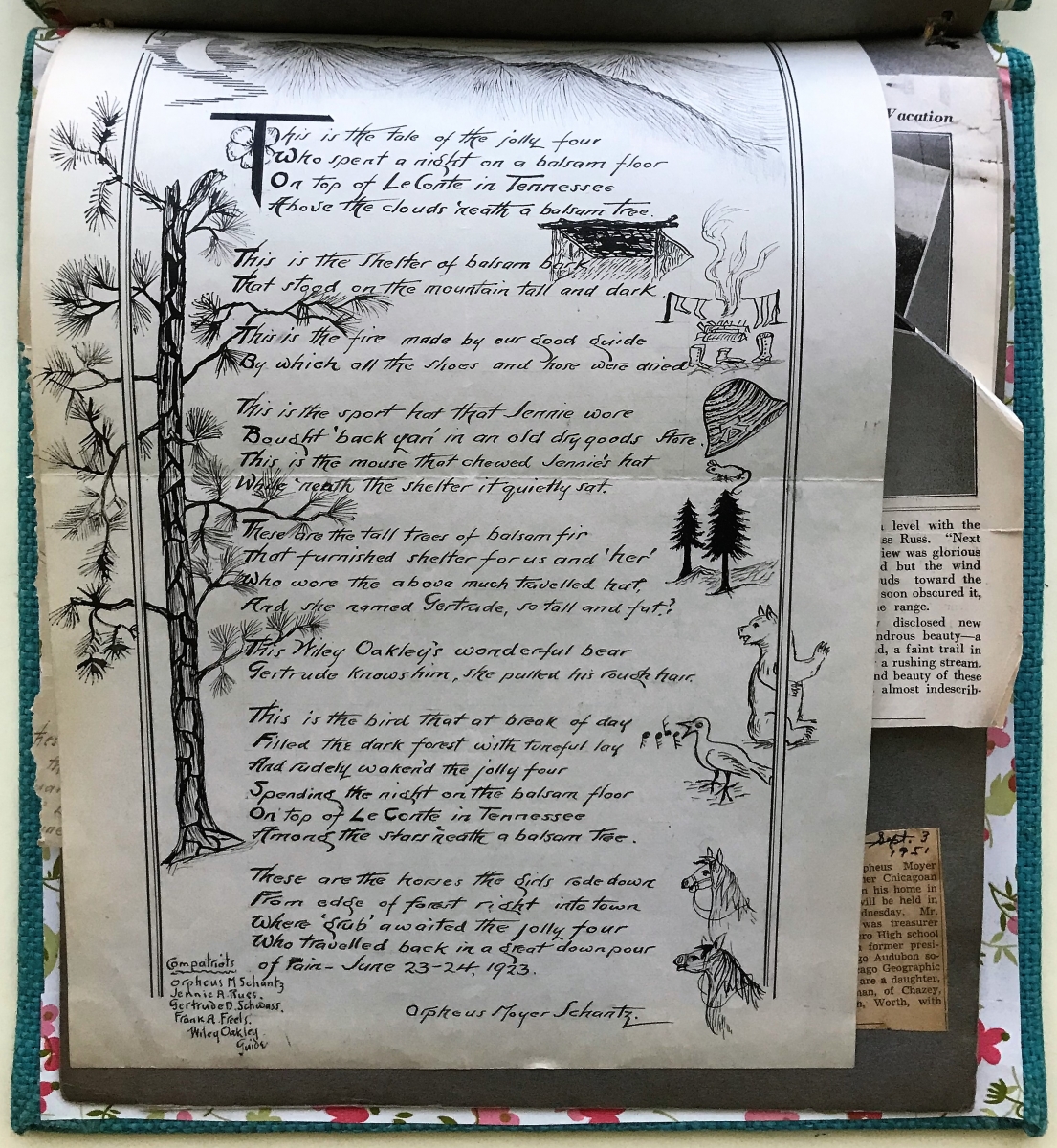
One of the original poems by Orpheus Schantz that are scattered throughout the album. Handwritten poem that summarizes the trip the four friends took. It is bordered by pen and ink drawings of trees, horses, a campfire, and other wildlife.

A page from the album featuring three black and white photographs of the four friends on their adventures, as well as a poem by Orpheus Schantz titled “To Gertrude.”

This black and white photograph from the album features the group’s guide, Wiley M. Oakley, who was a well-known wilderness guide, nicknamed “Roamin’ Man of the Mountains.” There is a historical marker in Gatlinburg Tennessee in his memory.
- Contributed by Anna Smith, Manuscripts and Archives Processor
These and other collections are available for viewing in the Special Collections Research Center at Appalachian State University, a part of University Libraries. Please email spcoll@appstate.edu or visit https://collections.library.appstate.edu/visit to learn more.

